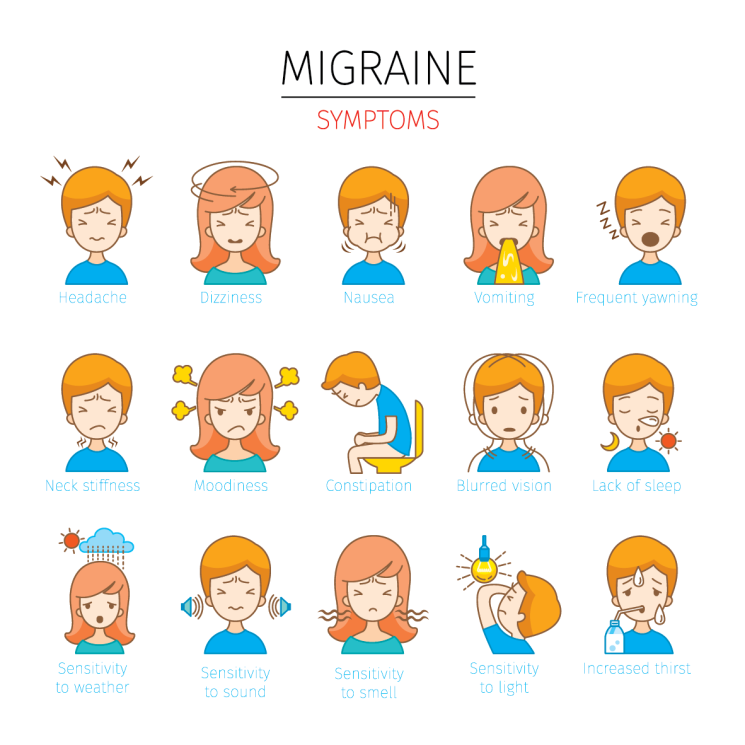A Migraine is a neurological condition or disorder which is characterized by severe headaches, usually giving a throbbing or pulsating feeling on either one or both sides of one’s head. Migraine is a throbbing, incapacitating headache that might disrupt your daily activities. The pounding headache is frequently accompanied by sensitivity to light, food triggers, and other factors. Environmental factors such as weather changes might potentially provoke this neurological disorder. Weather variations, particularly changes in barometric pressure, temperature, humidity, and atmospheric conditions, can cause migraines in certain people. However, not everyone who suffers from migraines is susceptible to weather variations, and the exact mechanisms underlying these triggers remain unknown.
Studies say that Migraine is the sixth most disabling disease in the world. It could be genetic and can affect people of almost all ages. In young children, migraine goes undiagnosed as it is misunderstood to be a common headache or weakness. The duration of migraine varies between individuals. Most of the attacks last for a minimum of 4 hours. If an attack of a migraine lasts longer than three days, it has to be treated in a hospital setting.
What does Migraine feel like?
Migraine feels different to different people
- A one-sided headache
- Pulsating or throbbing pain
- Moderate to severe pain
- Worsening of pain during movement (walking, climbing stairs)
- Sensitivity to sound and light
- Nausea with or without vomiting or diarrhea
Migraine usually lasts for about four hours. If they are not treated it can last for a week.
Rapid changes in weather have been shown in tests to upset the body’s internal balance, leading in migraines in individuals who are sensitive. Changes in weather can affect changes in blood flow, nerve sensitivity, and neurotransmitter activity in the brain. For example, a sudden drop in barometric pressure may cause blood vessels in the head to dilate, resulting in the pounding headaches associated with migraines. People with a migraine history are usually more sensitive to weather changes, increasing their risk of migraine attacks during periods of significant climatic variance.
MIGRAINE: TIPS TO REDUCE PAIN SYMPTOMS
Rest in a dark, quiet room: Because migraine episodes can be caused by light and noise, it’s critical to find a dark, quiet location to rest while you’re having one. This can help with pain and other symptoms.
Apply a cold compress: Use a cold compress to help numb the discomfort and minimize inflammation. An ice pack, a bag of frozen veggies, or even a cool washcloth wrapped over your head can help.
Drink plenty of fluids: Dehydration can induce and intensify migraines, so staying hydrated is critical. Water is the best option, but clear broths and sports drinks are also acceptable.
Stress management: Meditation, yoga, and deep breathing are all effective stress-reduction practices. You might also try listening to soothing music.
Avoid your migraine triggers: If you know what causes your headaches, attempt to avoid it. This could include specific foods, beverages, hobbies, or environmental influences.
Maintain an active lifestyle: Exercise can assist to lower stress and improve sleep quality, both of which can aid in migraine prevention.
Healthy Diet: A balanced diet can assist to enhance your general health and well-being, which can help to minimize migraines.
Good sleep quality: Get enough sleep to maintain good sleep quality. The average adult need 7-8 hours of sleep per night. Migraines are less likely to occur when you are well-rested.
Frequent headaches are cause for concern and should be evaluated by a medical practitioner. A change in our sedentary lifestyle can help us mend numerous health ailments and live a healthier life.
Source:In








 Finance
Finance






